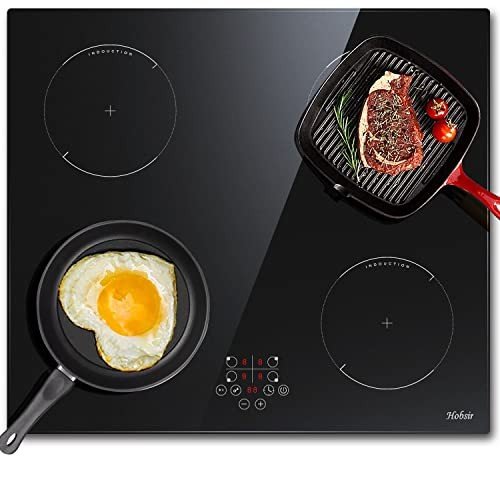What Hob And Oven Experts Want You To Be Educated
Understanding Hobs and Ovens: The Essential Kitchen Appliances
In the realm of kitchen home appliances, few items are as important as hobs and ovens. These home appliances form the backbone of culinary activities, allowing individuals to create whatever from basic meals to elaborate feasts. Comprehending the distinctions, types, and functionalities of hobs and ovens can considerably boost one's cooking experience. This article digs into the intricacies of hobs and ovens, offering insights that accommodate both amateur and experienced cooks.
What Is a Hob?
A hob, often described as a cooktop or range top, is the flat surface area on which pots and pans are placed for cooking. Hobs are equipped with heating components that generate the required heat for cooking food. They can be found in various forms, consisting of gas, electric, induction, and ceramic choices. Each type offers special benefits and disadvantages.
Kinds of Hobs
Gas Hobs:
- Heat Source: Natural gas or lp.
- Advantages: Instant heat control and responsiveness, chosen by lots of chefs for accurate cooking.
- Drawbacks: Requires a gas connection and can be less energy-efficient.
Electric Hobs:
- Heat Source: Electric coils or smooth glass-ceramic surfaces.
- Advantages: Generally much easier to clean, even heating, and widely readily available.
- Drawbacks: Slower to warm up and cool off compared to gas.
Induction Hobs:
- Heat Source: Electromagnetic currents.
- Advantages: Quick heating, energy-efficient, and only warms the pots and pans, not the surrounding surface area.
- Disadvantages: Requires suitable cookware (ferrous products).
Ceramic Hobs:
- Heat Source: Electric and has a smooth glass surface area.
- Advantages: Sleek appearance, simple to clean, and even heating.
- Drawbacks: Can take longer to warm up and cool off.
What Is an Oven?
An oven is an enclosed appliance that cooks food by surrounding it with dry heat. Ovens can be standalone systems or integrated with hobs in a single home appliance called a range. Ovens are versatile tools that can be utilized for baking, roasting, broiling, and more.
Types of Ovens
Standard Ovens:
- Heat Source: Electric or gas.
- Advantages: Good for standard baking and roasting.
- Downsides: Can have irregular heat circulation.
Convection Ovens:
- Heat Source: Electric or gas with a fan for circulating air.
- Advantages: More even cooking and faster cooking times due to airflow.
- Disadvantages: Can be costlier and might require modifications in cooking times.
Microwave Ovens:
- Heat Source: Microwaves.
- Benefits: Quick cooking and reheating; excellent for defrosting.
- Drawbacks: Can not brown or crisp food well.
Steam Ovens:
- Heat Source: Steam generation.
- Advantages: Retains nutrients and moisture in food, much healthier cooking choice.
- Downsides: Longer cooking times and normally greater cost.
Secret Differences Between Hobs and Ovens
While hobs and ovens serve the primary function of cooking food, their performances and utilizes vary considerably. The following table sums up these essential distinctions:
Feature
Hob
Oven
Cooking Method
Direct heat
Confined heat
Main Use
Boiling, sautéing, frying
Baking, roasting
Heat Source
Gas, electric, induction
Gas, electric, steam
Cooking Area
Flat surface area
Enclosed space
Cooking Time
Typically faster
Differs based upon meal
Control & & Precision
Immediate and direct
Count on settings and timers
Benefits of Using Hobs and Ovens Together
Combining using a hob and an oven can greatly enhance the cooking process. Here are some advantages:
- Versatility: Different types of food can be prepared all at once.
- Efficiency: Using both allows for various cooking strategies, such as burning on the hob and baking in the oven.
- Time-Saving: Multi-tasking can significantly minimize total cooking time.
Upkeep and Care
To guarantee the durability of hobs and ovens, regular upkeep is essential. Here are some suggestions:
For Hobs:
- Clean spills instantly to avoid staining.
- Usage proper cleaners for particular materials (e.g., ceramic cleaner for glass-ceramic hobs).
- Regularly check gas connections for leaks (for gas hobs).
For Ovens:
- Wipe down the interior after each use to avoid accumulation.
- Use self-cleaning features if readily available, or apply oven cleaners for tough stains.
- Frequently examine seals and gaskets for wear and tear (to maintain heat performance).
Frequently asked questions About Hobs and Ovens
1. What is the very best kind of hob for a newbie cook?
Response: A ceramic or electric hob is typically suggested for newbies due to alleviate of usage and cleaning.
2. Can I use any pots and pans on an induction hob?
Answer: No, induction hobs need pots and pans made from magnetic products (e.g., cast iron or stainless steel).
3. How often should More Signup bonuses clean my oven?
Answer: It is advisable to clean your oven every couple of months, or more often if you use it frequently.
4. Is it much better to bake in a convection oven?
Answer: Yes, stoves are typically better for baking as they provide even heat circulation. Nevertheless, some fragile recipes might take advantage of standard ovens.
Comprehending the performance and differences in between hobs and ovens is vital for any cooking enthusiast. Whether one chooses the instantaneous heat of a gas hob or the precision of an induction cooktop, each type offers special benefits. Likewise, ovens differ widely in function, from standard baking to steam cooking. By valuing these appliances' roles in food preparation, cooks can enhance their culinary abilities and simplify their kitchen activities.
